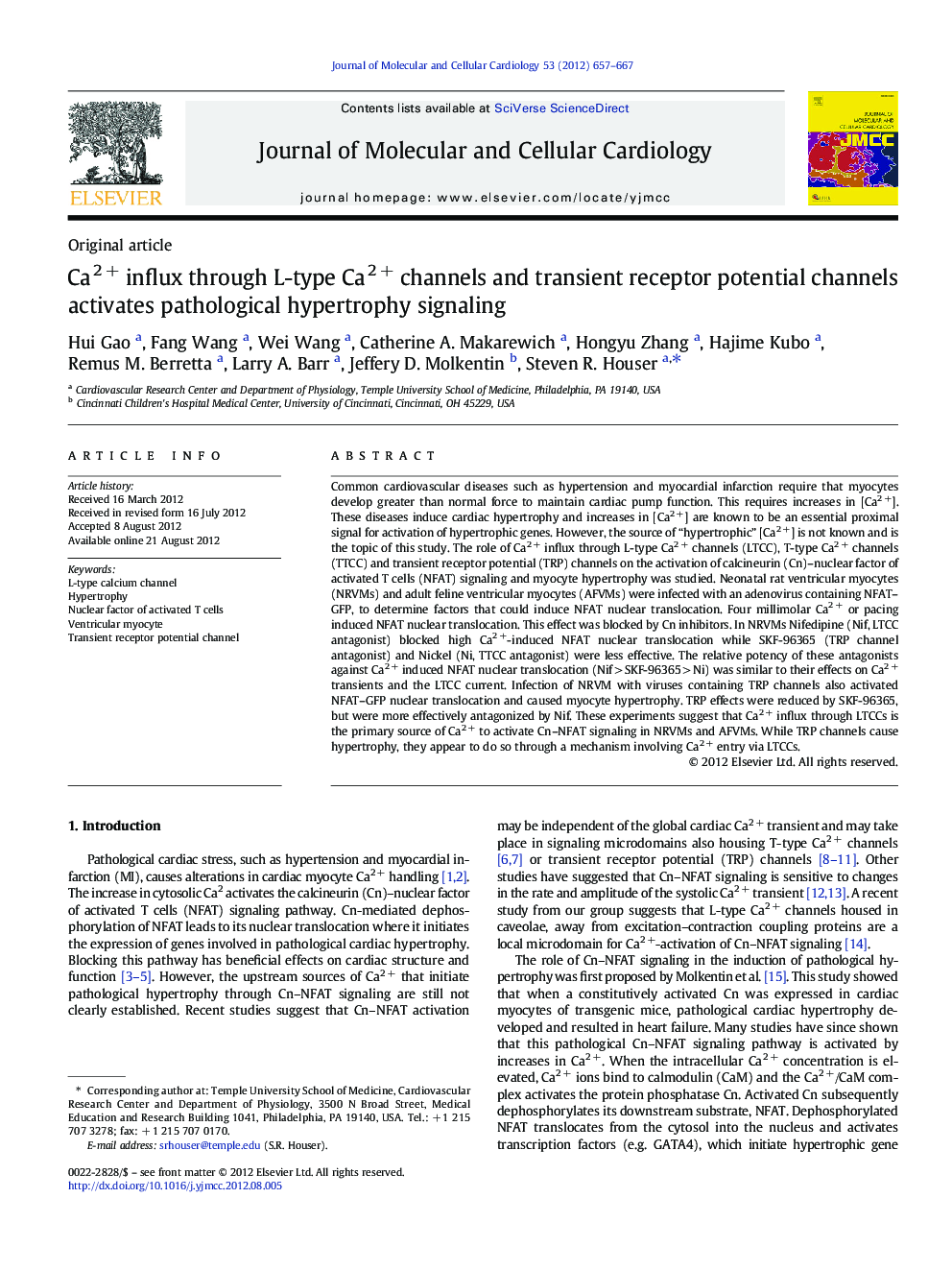| Article ID | Journal | Published Year | Pages | File Type |
|---|---|---|---|---|
| 2190719 | Journal of Molecular and Cellular Cardiology | 2012 | 11 Pages |
Common cardiovascular diseases such as hypertension and myocardial infarction require that myocytes develop greater than normal force to maintain cardiac pump function. This requires increases in [Ca2 +]. These diseases induce cardiac hypertrophy and increases in [Ca2 +] are known to be an essential proximal signal for activation of hypertrophic genes. However, the source of “hypertrophic” [Ca2 +] is not known and is the topic of this study. The role of Ca2 + influx through L-type Ca2 + channels (LTCC), T-type Ca2 + channels (TTCC) and transient receptor potential (TRP) channels on the activation of calcineurin (Cn)–nuclear factor of activated T cells (NFAT) signaling and myocyte hypertrophy was studied. Neonatal rat ventricular myocytes (NRVMs) and adult feline ventricular myocytes (AFVMs) were infected with an adenovirus containing NFAT–GFP, to determine factors that could induce NFAT nuclear translocation. Four millimolar Ca2 + or pacing induced NFAT nuclear translocation. This effect was blocked by Cn inhibitors. In NRVMs Nifedipine (Nif, LTCC antagonist) blocked high Ca2 +-induced NFAT nuclear translocation while SKF-96365 (TRP channel antagonist) and Nickel (Ni, TTCC antagonist) were less effective. The relative potency of these antagonists against Ca2 + induced NFAT nuclear translocation (Nif > SKF-96365 > Ni) was similar to their effects on Ca2 + transients and the LTCC current. Infection of NRVM with viruses containing TRP channels also activated NFAT–GFP nuclear translocation and caused myocyte hypertrophy. TRP effects were reduced by SKF-96365, but were more effectively antagonized by Nif. These experiments suggest that Ca2 + influx through LTCCs is the primary source of Ca2 + to activate Cn–NFAT signaling in NRVMs and AFVMs. While TRP channels cause hypertrophy, they appear to do so through a mechanism involving Ca2 + entry via LTCCs.
